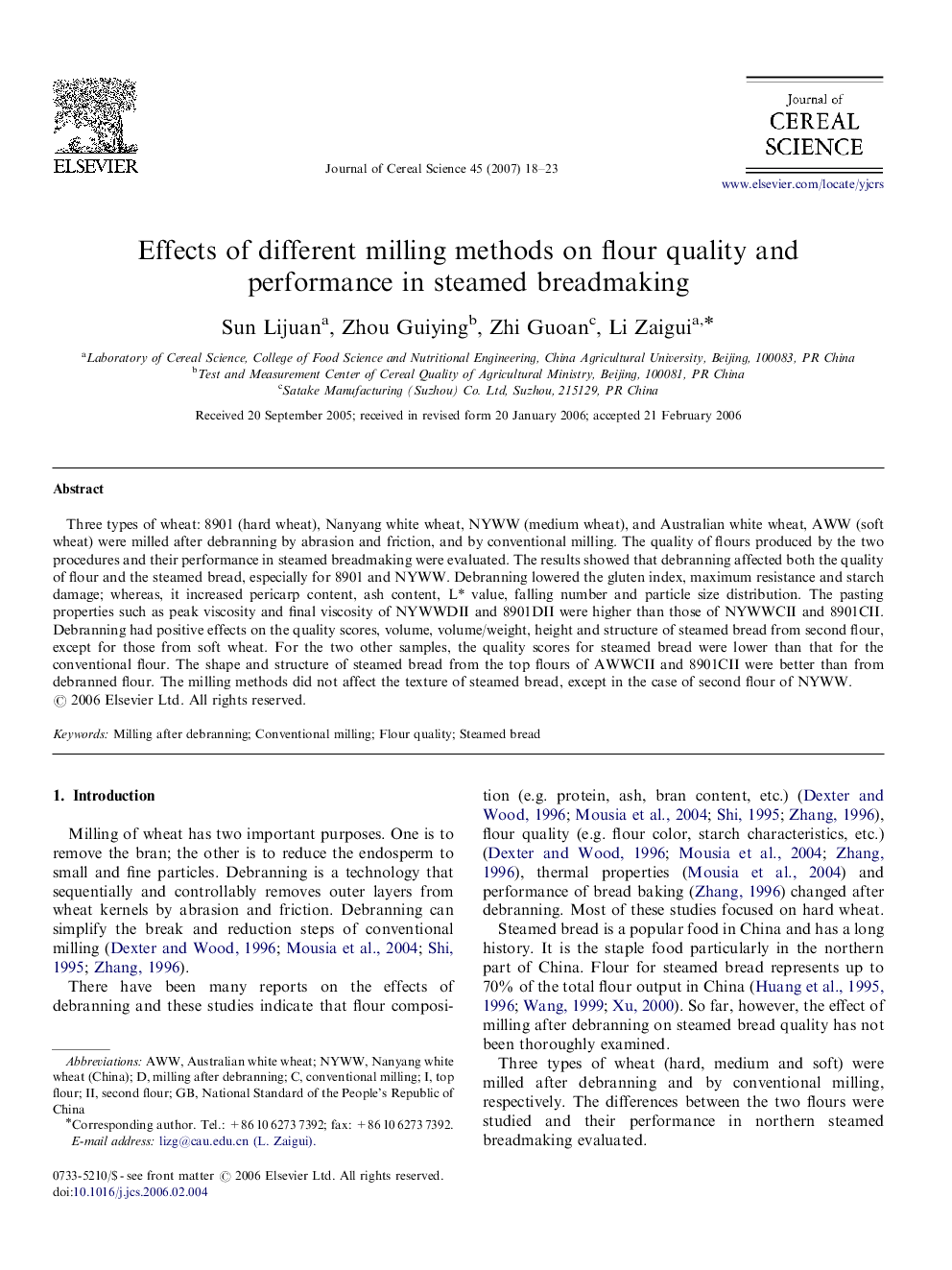| کد مقاله | کد نشریه | سال انتشار | مقاله انگلیسی | نسخه تمام متن |
|---|---|---|---|---|
| 4516696 | 1322368 | 2007 | 6 صفحه PDF | دانلود رایگان |

Three types of wheat: 8901 (hard wheat), Nanyang white wheat, NYWW (medium wheat), and Australian white wheat, AWW (soft wheat) were milled after debranning by abrasion and friction, and by conventional milling. The quality of flours produced by the two procedures and their performance in steamed breadmaking were evaluated. The results showed that debranning affected both the quality of flour and the steamed bread, especially for 8901 and NYWW. Debranning lowered the gluten index, maximum resistance and starch damage; whereas, it increased pericarp content, ash content, L* value, falling number and particle size distribution. The pasting properties such as peak viscosity and final viscosity of NYWWDII and 8901DII were higher than those of NYWWCII and 8901CII. Debranning had positive effects on the quality scores, volume, volume/weight, height and structure of steamed bread from second flour, except for those from soft wheat. For the two other samples, the quality scores for steamed bread were lower than that for the conventional flour. The shape and structure of steamed bread from the top flours of AWWCII and 8901CII were better than from debranned flour. The milling methods did not affect the texture of steamed bread, except in the case of second flour of NYWW.
Journal: Journal of Cereal Science - Volume 45, Issue 1, January 2007, Pages 18–23